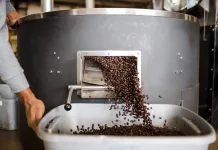Establishing a beverage company may be a thrilling endeavor with lots of room for ingenuity, creativity, and commercial acumen. To win in a competitive market, though, demands meticulous preparation, investigation, and strategic decision-making, just like any other commercial venture. Whether you’re thinking of starting a new line of specialty coffees, artisanal teas, or craft sodas, there are 10 things you should know before entering the beverage industry as an entrepreneur.
1. Market Research and Analysis:
To grasp the state of the market, customer preferences, and new trends, it is important to perform in-depth market research and analysis prior to launching a beverage company. Determine your product’s potential to meet opportunities or gaps in the market, evaluate your rivals, and identify your target market. You can distinguish your beverage brand from rivals and create a unique selling proposition (USP) with the use of market research.
2. Define Your Beverage Concept:
Clearly state the kind of drink you intend to make, together with its components, taste profiles, packaging, and branding, in order to define your beverage concept. When designing your beverage, take into account elements like target demographics, dietary requirements, and market demand. Make sure your concept fits with customer tastes and market trends, whether you’re making flavored sparkling water, premium cold brew coffee, or a nutritious energy drink.
3. Regulatory Compliance and Licensing:
Establishing a beverage business requires navigating the regulatory environment since strict laws and standards govern the food and beverage sector. Learn about the laws that apply to food safety, packaging, labeling, and distribution on a local, state, and federal level. To safeguard the health and safety of customers, get the licenses, permits, and certificates required to operate lawfully and guarantee adherence to food safety rules.
4. Product Development and Testing:
To improve your beverage’s recipe, composition, and flavor profile, devote time and resources to product development and testing. Gather input from prospective buyers through focus groups, taste testing, and sensory assessments so you may improve your product according to their preferences. Try a variety of ingredients, taste combinations, and brewing methods to come up with a distinctive and enticing beverage that appeals to your target market.
5. Packaging and Branding Strategy:
Create a branding and packaging approach that is consistent with your target market, brand identity, and beverage idea. Select labels, designs, and package materials that complement the positioning, values, and aesthetics of your brand. Invest in superior beverage packaging solutions to improve shelf appeal, consumer convenience, and product freshness. To build a strong brand image and set your beverage apart from rivals, create eye-catching branding components, including logos, colors, and brand messaging.
6. Distribution and Retail Strategy:
Create a distribution and retail plan to make sure your drink gets to customers quickly and effectively. Consider your target market and the type of product when evaluating channels of distribution, including selling directly to consumers, retail partnerships, online stores, and food service locations. To increase your reach and optimize sales chances, cultivate connections with food service operators, wholesalers, distributors, and retailers.
7. Marketing and Promotion:
Put into practice a thorough marketing and promotion plan to increase brand recognition, boost sales, and foster customer loyalty for the beverage company. Reach and interact with potential consumers by using digital marketing channels, including influencer relationships, email marketing, social media, and content marketing. Create innovative marketing campaigns, sales, and events to promote your product, draw attention to its special qualities, and entice others to try it out and make more purchases.
8. Financial Planning and Budgeting:
For your beverage business, estimate launch costs, ongoing expenditures, and income expectations by creating a thorough financial strategy and budget. When creating your company’s budget, take into account elements like product creation, production, packaging, advertising, distribution, and overhead expenses. To pay for startup expenses and guarantee that there is enough money to sustain operations and expansion of the firm, obtain funds from investors, loans, personal savings, or crowdsourcing websites.
9. Supply Chain Management:
For your beverage company, create strong supply chain management procedures to guarantee a consistent and dependable supply of ingredients, packaging, and completed goods. Find trustworthy manufacturers, co-packers, logistic partners, and suppliers who can fulfill your production needs, delivery dates, and quality standards. Use procurement strategies and inventory management systems to cut costs, shorten lead times, and maximize supply chain efficiency.
10. Adaptability and Innovation:
Finally, while you negotiate the opportunities and problems of the beverage sector, continue to be flexible and receptive to new ideas. Keep up with changes in customer tastes, industry trends, and technology that might affect your company. Based on consumer feedback and market information, iterate and enhance your product, packaging, advertising, and marketing tactics continuously. To keep your beverage business ahead of rivals and ensure long-term success, embrace innovation, experimentation, and teamwork.
Conclusion
Establishing a beverage company involves meticulous preparation, investigation, and implementation to thrive in a cutthroat and ever-changing market. You may position the beverage brand for success by comprehending market trends, establishing your beverage idea, making sure you’re in accordance with regulations, improving product development, and putting together efficient marketing and distribution plans.














![[Viral Video] Wpcnt.com 2023: A Dive into Jannat Toha’s Viral Video Details](https://www.businesszillablog.com/wp-content/uploads/2023/10/viral-video-150x150.png)
![[UNCUT] Bashid Mclean Original Photo No Blur: Tania Head’s Unblurred Image Sparks Discussion Bahsid McLean la Photo Sin Miedo Al Ban](https://www.businesszillablog.com/wp-content/uploads/2023/09/image-4-786x420-min-150x150.png)

